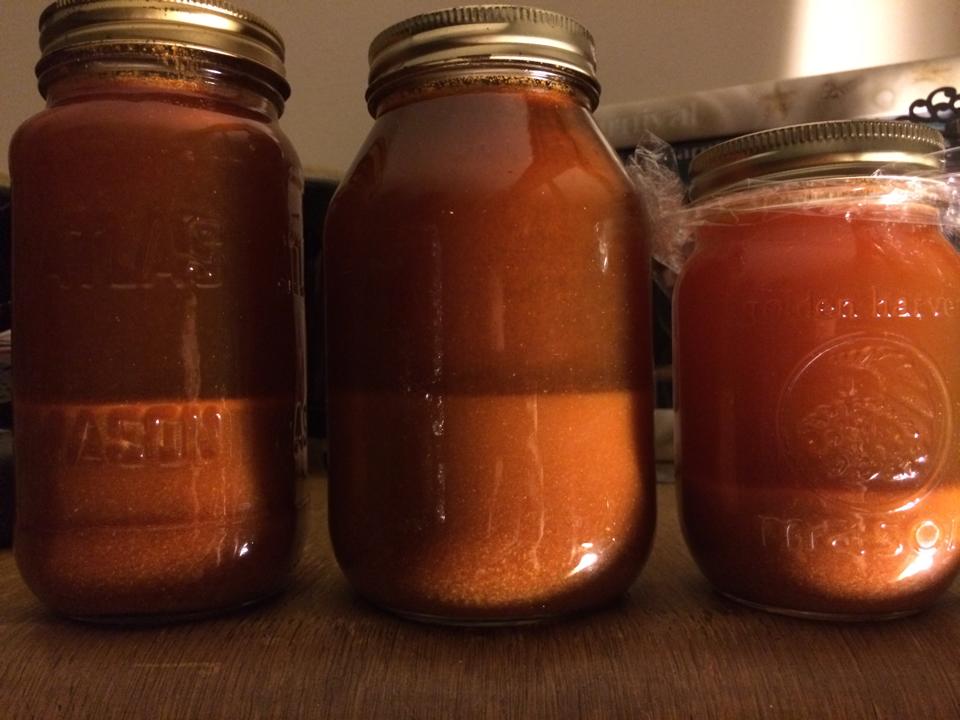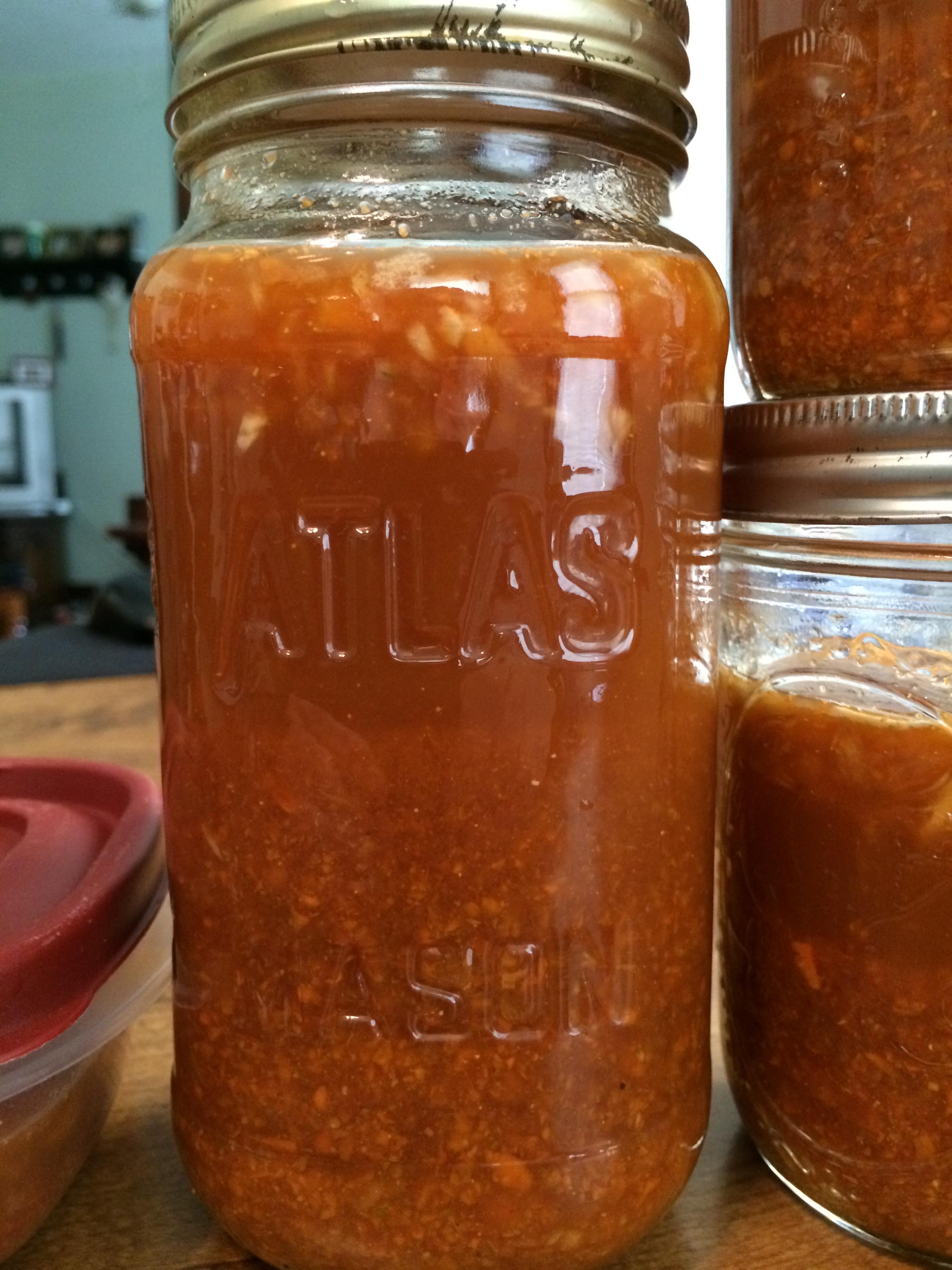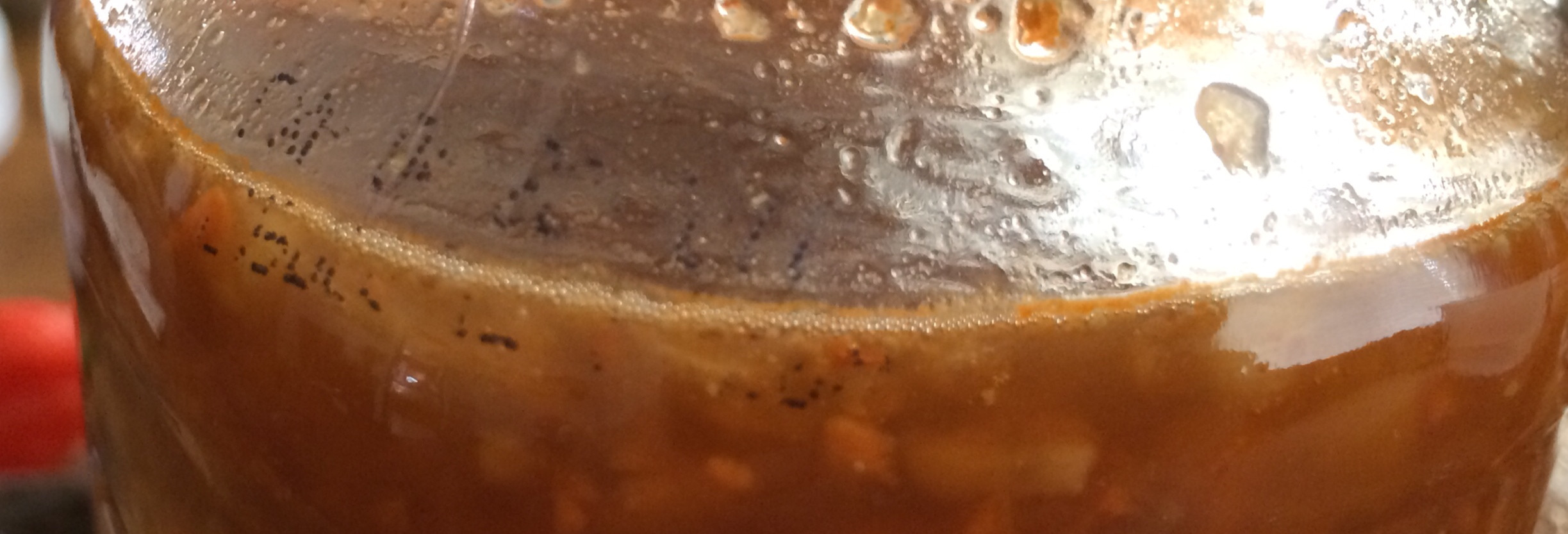Hey Guys!
I have been lurking here for quite some time ( I actually thought I needed to pay for a year subscription to sign up and put it off for a long time) and this is my first post!
YAY!
I need some advice.
I had a lot of red jalapenos last year that I dehydrated and froze. My dehydrator never gets above 120 degrees so I assume the bacteria survives it.
Yesterday I couldn't wait any longer on this year's peppers, and I got started on making a hot sauce.
I added 1 cup of red jalapeno powder that I made in my herb grinder, and then added 2.5 cups of brine.
Here is where the problems begin. I did math incorrectly when making my brine and ended up with a 25% solution instead of 2.5% O_O
I let it sit over night and there was (obviously) no sign of fermentation. The pepper powder had rehydrated and filled the jar with almost no additional liquid.
I realized my brine was too salty and that my bacteria was probably dead now, so I split my jar into 3 jars, and added fresh (boiled then cooled) water to each jar to fill them up. I topped each one off with whey I gathered from yogurt, and closed them loosely (until my air-locks and plastic lids and grommets come tomorrow)
I checked my Ph and it is above 4.4 (but idk how much higher since my strips only go to 4.4).
Here is a photo of what the 3 jars look like tonight.

the sediment on the bottom is the reconstituted red jalapeno powder.
Do I have any hope?
Thanks guys (and gals?)!
I have been lurking here for quite some time ( I actually thought I needed to pay for a year subscription to sign up and put it off for a long time) and this is my first post!
YAY!
I need some advice.
I had a lot of red jalapenos last year that I dehydrated and froze. My dehydrator never gets above 120 degrees so I assume the bacteria survives it.
Yesterday I couldn't wait any longer on this year's peppers, and I got started on making a hot sauce.
I added 1 cup of red jalapeno powder that I made in my herb grinder, and then added 2.5 cups of brine.
Here is where the problems begin. I did math incorrectly when making my brine and ended up with a 25% solution instead of 2.5% O_O
I let it sit over night and there was (obviously) no sign of fermentation. The pepper powder had rehydrated and filled the jar with almost no additional liquid.
I realized my brine was too salty and that my bacteria was probably dead now, so I split my jar into 3 jars, and added fresh (boiled then cooled) water to each jar to fill them up. I topped each one off with whey I gathered from yogurt, and closed them loosely (until my air-locks and plastic lids and grommets come tomorrow)
I checked my Ph and it is above 4.4 (but idk how much higher since my strips only go to 4.4).
Here is a photo of what the 3 jars look like tonight.

the sediment on the bottom is the reconstituted red jalapeno powder.
Do I have any hope?
Thanks guys (and gals?)!



